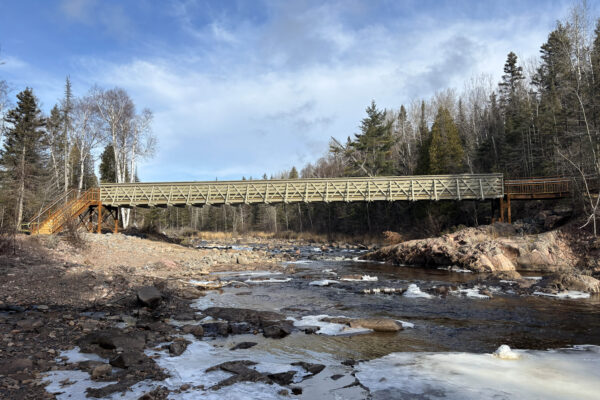Shorter days and shifting weather spur fall bird migration along the North Shore
As the fall bird migration continues along the North Shore, the decreasing daylight hours are expected to bring more species into view as they prepare to head south.
While decreasing daylight is a key factor that triggers birds to migrate south, shifting temperatures and dwindling food sources also play a crucial role.
Margie Menzies, the education director at Hawk Ridge in Duluth, Minn., said so far this fall, the migration has been “phenomenal in some ways and strange in others.”
Several species are doing “exceptionally well” this year, Menzies said. “We have some that are well above 10-year and all-time averages.”
A few of the species doing well this year are the Turkey Vulture, American Kestrel, Merlin, and Peregrine Falcon. However, Menzies noted that a few species, including the Osprey and Broad-winged Hawk, have not yet reached their average counts this season.
With the windy conditions along the North Shore in previous days, observers noted that gusty west winds had birds arriving early in the morning, and sightings of Red-tailed Hawks and Rough-legged Hawks along the ridge were bountiful.
On Nov. 3, Hawk Ridge Bird volunteer observers counted 153 Bald Eagles, 481 Red-tailed Hawks, 29 Golden Eagles, and 14 Sharp-shinned Hawks, among numerous other species sightings. In total, observers counted 35 different species, comprising a total of 1,515 individual birds.
Monday also brought a noticeable increase in sightings of a smaller species, the Common Redpoll. Observers counted 348 on Nov. 3. The Common Redpoll typically moves south into southern Canada and the northern U.S. during the winter months. The species may migrate to different areas throughout the long winter months due to changes in food availability.
Common Redpolls have been spotted in Lutsen and along the North Shore, according to sightings shared with WTIP.
While winter is nearing, Menzies said, “The weather has been fantastic this fall and there’s still a ton of migration yet to come.”
According to BirdCast, a Cornell Lab of Ornithology interactive map, 39,000 birds migrated over Cook County overnight. Many bird species are nocturnal migrants and will travel south under the cover of darkness. According to the Cornell Lab, species known to travel across Cook County and northeastern Minnesota at night are the American Tree Sparrow, Red-headed Woodpecker, Gray Catbird, Horned Grebe, Golden-crowned Kinglet, Lesser Scaup, and the Yellow-rumped Warbler, among many others.
WTIP’s CJ Heithoff spoke with Hawk Ridge Education Director Margie Menzies about the fall migration at Hawk Ridge and along the North Shore. The audio is below.














